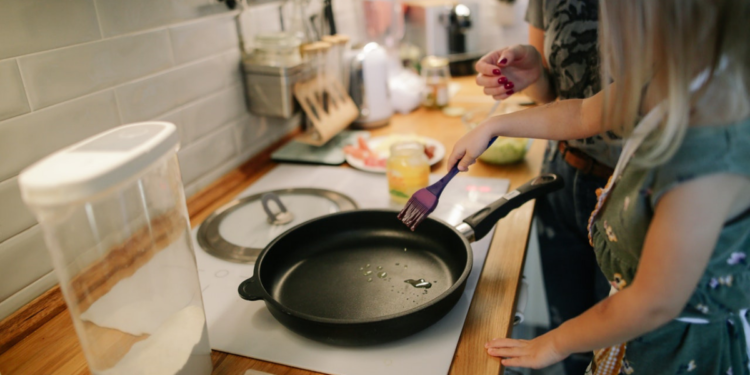Barbie’s Dollhouse had a Bigger Fridge
On my shopping list were all of the typical items, (flour, sugar, spices, basic condiments), ingredients for a few of our go-to dishes, some fresh produce, a back-up frozen DiGiorno, some celebratory wine, and a six-pack of “fresh-from-the-border” Belgian beer.
At the time, we hadn’t given much thought to the small fridge the real estate agent had pointed out. She explained that the German way was to buy fresh ingredients often – so you actually didn’t need that much fridge space.
Determined to be as worldly as possible, and fully embrace living on the German economy, we foolishly believed her.
The gravity of that mistake came full circle, when I came home from the grocery store, and opened the tiny panel in the fridge that promised to be cold storage. The “freezer” was the size of a hotel-room safe. The only way a frozen pizza was fitting in there, would be if I folded it in half and crammed it in.
A jug of milk wouldn’t fit in the door, nor would it fit on a shelf right-side up. I had to turn it on its side and slide the jug onto a bottom shelf.
The next morning, we swallowed our pride and phoned the base housing office to schedule an American-sized refrigerator delivery from the overseas furniture management office. That worldly, German fridge has come in useful though. We use it as our dedicated beer and wine chiller!
Another Tiny Little Problem
We thought the worst of our culinary challenges were behind us once we’d figured out the shelving and fridge situation – but we were wrong.
There were two new problems, the source of the trouble centering on our little German wonder-stove.
The first problem was that whomever had engineered the fridge, must also have made ovens, because my 9×13 inch pan, with handles, wouldn’t fit. The dish was simply too wide for our minuscule oven.
The second dilemma became apparent once I tried to preheat. I needed 350 degrees Fahrenheit.
But this little contraption had a temperature reading that spanned 50 to 250, and topped out at some strange setting I assumed to be broil, as there were no numbers – and simply a tiny ‘Flame’ icon as the highest setting.
It took me a minute to figure out the trick. Of course, it wouldn’t be in Fahrenheit. It was in Celsius.
After looking up temperature conversions several times during the first week, I now keep a 3×5 notecard tucked in the silverware drawer with common Fahrenheit to Celsius conversions written down. I did work up the courage to try the flame setting – on a pan of marshmallow-topped sweet potatoes. Just once. The marshmallows caught fire in forty-five seconds.
Sara Lee makes our sweet potato casserole now. She just uses a smaller pan, and the microwave.
The Final Coup de Grâce, Trash
We have not one, not two, but four, (FOUR!) trash cans for our home. Proper disposal of garbage is serious business in Germany – and the trash trucks will not pick up your curbside garbage if you get it wrong.
Paper recycling, food waste, garden compost, and general garbage – each require a different trash can. Plastics go into a nifty yellow bag, called the “Gelb Sack.” The Gelb Sacks come in giant rolls, obtained at your local City Hall.
You cannot throw away glass from your home, instead – you must sort all of your used bottles into the three respective categories of white, green, and brown glass. But – some glass, like beverage bottles, are “special glass” that come with a cash refund. So, you are incentivized to return the ‘cash glass’ to another receptacle entirely.
The German municipalities are so serious about trash collection and recycling – that the local City Hall helpfully provides each household with an in-depth booklet on how to properly dispose and recycle. The booklet is 19-pages long. Not even kidding.
It has taken some time, but I’ve slowly learned how to make peace with our tiny kitchen. We all keep the local O-Club in business during the holidays, as no one in the community has an oven large enough to roast a turkey, or a large ham. I’ve become more creative at incorporating the microwave into my cooking routine. The crockpot is used at least once a week, often more. But most of all, I’ve gained a new appreciation that sometimes we simply have to accept things as they are – not how we wished they would be.
“Peace is the result of retraining your mind to process life as it is, rather than as you think it should be.” – Wayne W. Dyer
Even when that means making peace, with a tiny, tiny kitchen.








